Summer in Tibet – The Peak Season for Tibetan Tourism
As the summer months slowly roll around in Tibet, the peak season for Tibetan tourism opens up and the plateau region gets ready for another busy period. An ancient land that lies on the world’s highest plateau, Tibet has only recently seen an increase in its tourism numbers from international travelers, and with yet another busy summer period looming on the near horizon, the plateau land of mountains, lakes, and monasteries is already getting busier.
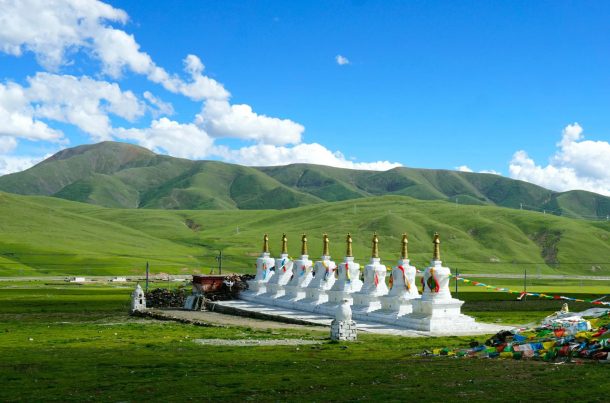
Summer, from June to August, is not only the peak season for travel to Tibet, but is also the monsoon season, which makes it the hottest and wettest time of year as well. Traveling to Tibet in the peak season for Tibetan Tourism is does mean that you will see crowds of international and domestic tourists flocking to the plateau and its amazing attractions. However, there are many benefits to traveling to Tibet in the peak period, when all the attractions are open, the weather is warm and comfortable, and the oxygen levels of the plateau are higher than at any other time of year.
Table of Contents
Climate and weather of Tibet in Summer
Tibet is a land that is heavily affected by the southwest and northeast monsoons, which gives the region distinct wet and dry seasons across the plateau. Summer is the wet monsoon season in Tibet, when the rains fall across the plateau, with most of the rain falling in the months of July and August.
However, while the southwest monsoon from the Indian Ocean does drive onto the plateau, bringing with it the monsoon rains and higher humidity, the season is very different from anywhere else in Southeast Asia.
Sitting between the plateau and the Southwest Monsoon are the high mountains of the Himalayas. These massive peaks catch most of the rain traveling northeast, forcing most of the rain to fall on the western and southern slopes of the mountains, leaving little rain left to fall on the plateau’s arid landscape.
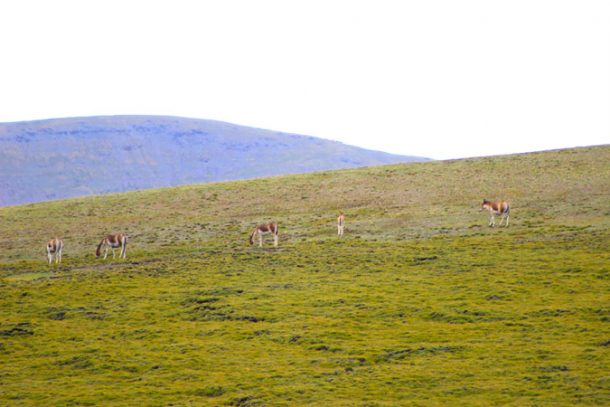
As far as temperatures and sunshine go, summer is the warmest time of year on the plateau, though the eastern areas of Tibet are much warmer than in the west. Altitude plays a big part in the increasing temperatures, and as you get higher up on the plateau, you will feel less heat from the summer sun.
Average temperatures across the plateau range from around 20 degrees in June to as high as 26 degrees in July, the warmest month of the year. Lower areas such as Lhasa and Nyingchi can see daytime temperatures of 24-26 degrees, staying well above freezing at night. Higher areas such as Ngari often see much lower daytime temperatures, reaching only around 18-20 degrees, with lows that can still get close to freezing at night.
August is the wettest month of the year in Tibet, and the region sees around 130-150mm of rain on average for the month. However, while the monsoon does bring the heavier rains in August, most of this falls in the late evening and overnight, leaving the days bright and clear for touring. And again, the altitude plays a large part in the amount of rain that falls. In the east, the rain is heavier and stronger, while in the far west and northwest, where the mountains are higher, there can often be very little rain at all, and even that normally comes in light showers.
Protection from Tibet’s Summer Sun
While the temperatures may not be as hot as some of the more tropical countries of Southeast Asia, the thinner atmosphere means that there is just a great a risk of getting sunburn. With a less dense atmosphere at the higher altitude of the plateau, there is less diffusion of the sun’s harmful UV rays, and the summer months of the plateau can be a time for heavy sunburn and sunstroke.
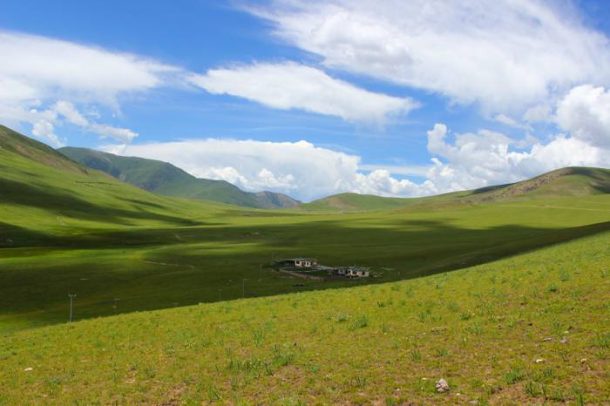
When traveling to Tibet in the summer, it is recommended to bring along a good 30+ factor sun cream to keep off the worst of the sun’s burning rays, and it is advisable not to spend too much time out in the direct sunlight during the day, even with sun cream on. You should also bring a good wide-brimmed hat and your sunglasses to protect your head and eyes from the heat and brightness of the sun. The higher UV content of the sunshine can leave you with heatstroke if you are out in it for a long time unprotected, and the reflected brightness of the mountains and dry plains can lead to snow-blindness in some people if sunglasses are not used.
Recommended Natural Attractions to Visit in Summer in Tibet
If you are traveling to Tibet in the peak season for Tibetan Tourism, rain is really the least of your worries. With very little rain falling around the plateau areas most popular for tourists in summer, getting to all of the best attractions in Tibet are no problem at all. And you have the opportunity to see these stunning natural attractions at their very best.
Lake Namtso
Lying to the northwest of Lhasa on the boundary between Damxung County of Lhasa and Baingoin County of Nagqu, Lake Namtso is one of those amazing places that is best visited in the peak season of summer for the stunning mountains that lie to its east and the vast open prairies that sit to the west. One of the Great Three Sacred Lakes of Tibet, Lake Namtso is one of the best places to see the grazing herds of domestic yaks, with their Tibetan nomadic herders and huge Tibetan mastiffs in attendance.
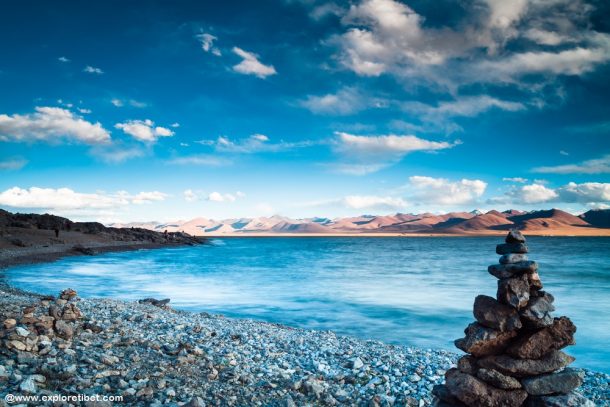
Shigatse and Lake Yamdrok
To the west of Lhasa lies Shigatse, the second city of Tibet, and the location of another of the Great Three Sacred Lakes, Lake Yamdrok. Believed to have been created from the will of a goddess who feared the multitude of lakes it used to be would dry up, this stunning lake stretches out like a Chinese fan just a short distance southwest of the Tibetan capital.
Mount Kailash and Lake Manasarovar
In the far northwest of Tibet, in Ngari Prefecture, lies the sacred mountain, Mount Kailash, and the third of the sacred lakes, Lake Manasarovar. Renowned to be the most sacred mountain in the world, Mount Kailash sits in the western section of the Gangdise Range of the Transhimalaya, at an elevation of 6,638 meters.
Held to be sacred in four religions, it is also the site of the Kailash Kora trek, the most arduous trekking route on the plateau and the route of the most austere and meritorious pilgrimage kora for Tibetan Buddhists and Hindus. A 52-kilometers trek around this pyramid-like mountain, the kora route is the most popular of all the pilgrimage and trekking routes in Tibet for both tourists and locals alike.
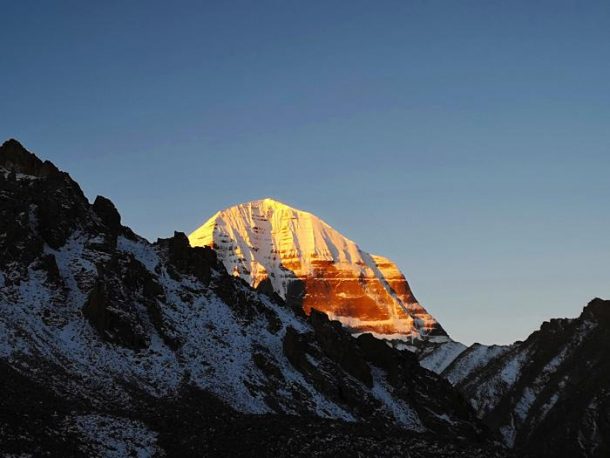
Lying a short distance to the south, Lake Manasarovar is also held as sacred in the four religions, with Hinduism and Buddhism holding it in great reverence as the earthly representation of the legendary Mount Meru. In Hinduism, it is believed to have been formed in the mind of Lord Brahma and made manifest on the earth. For Buddhists, the lake is believed to be the place where Siddhartha Gautama was conceived, who went on to become the renowned Buddha and founder of the global Buddhist religion.
Mount Everest Base Camp
No visit to Tibet can be complete without a trip to Mount Everest, the highest mountain on the planet. Located right on the border between Nepal and China, in Tibet’s western Shigatse Prefecture, this huge peak sits at an altitude of 8,848 meters above sea level and is the single most popular natural tourist attraction in the region.
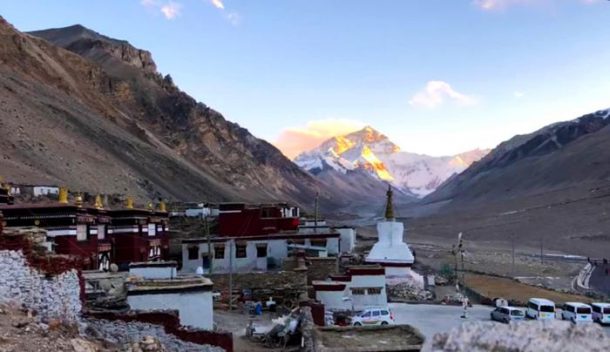
However, while it is a great place to visit at any time of the year, there are many times throughout the wetter and more humid summer months when clouds cover the summit, and the massive peak cannot be seen for days at a time. So if you are planning a summer visit to Everest Base Camp, be aware that the summit may not be visible, be aware that the summit may not be visible.
Recent Posts
The Ultimate Guide to Tibet Tours, Travel, and Trekking Adventures
How to Explore Tibetan Culture
Exploring Lhasa:The Heart of Tibet
All Categories
- About Tibet
- book a Tibet tour
- Buddhism Practice
- Budget Tour
- China-Tibet Train
- Customized Tibet tour
- Historical Sites
- Hot Springs in Tibet
- News
- Photography in Tibet
- Tibet attraction
- Tibet Group Visa
- Tibet Motorcycle Tour
- Tibet Small Group Tours
- Tibet Tours and Tibetan Tour Guide
- Tibet Train
- Tibet Travel FAQs
- Tibet Travel Information
- Tibet Travel News
- Tibet Travel Permit Update
- Tibet Travel Prices Rises
- Tibet Trek
- Tibet Trekking Tour
- Tibet weather and climate
- Tibet Wildlife animals
- Tibet Winter Tour
- Tibetan Buddhism
- Tibetan Cultural Features
- Tibetan Culture and Poeple
- Tibetan Festivals
- What to see in Tibet



